Banner art: Redbird Willie
Kay Key Ya
Nature, Natives, and California Regalia
an exhibit featuring the work of Redbird Willie and curated by Alexandru Salceanu
Banner art: Redbird Willie
an exhibit featuring the work of Redbird Willie and curated by Alexandru Salceanu
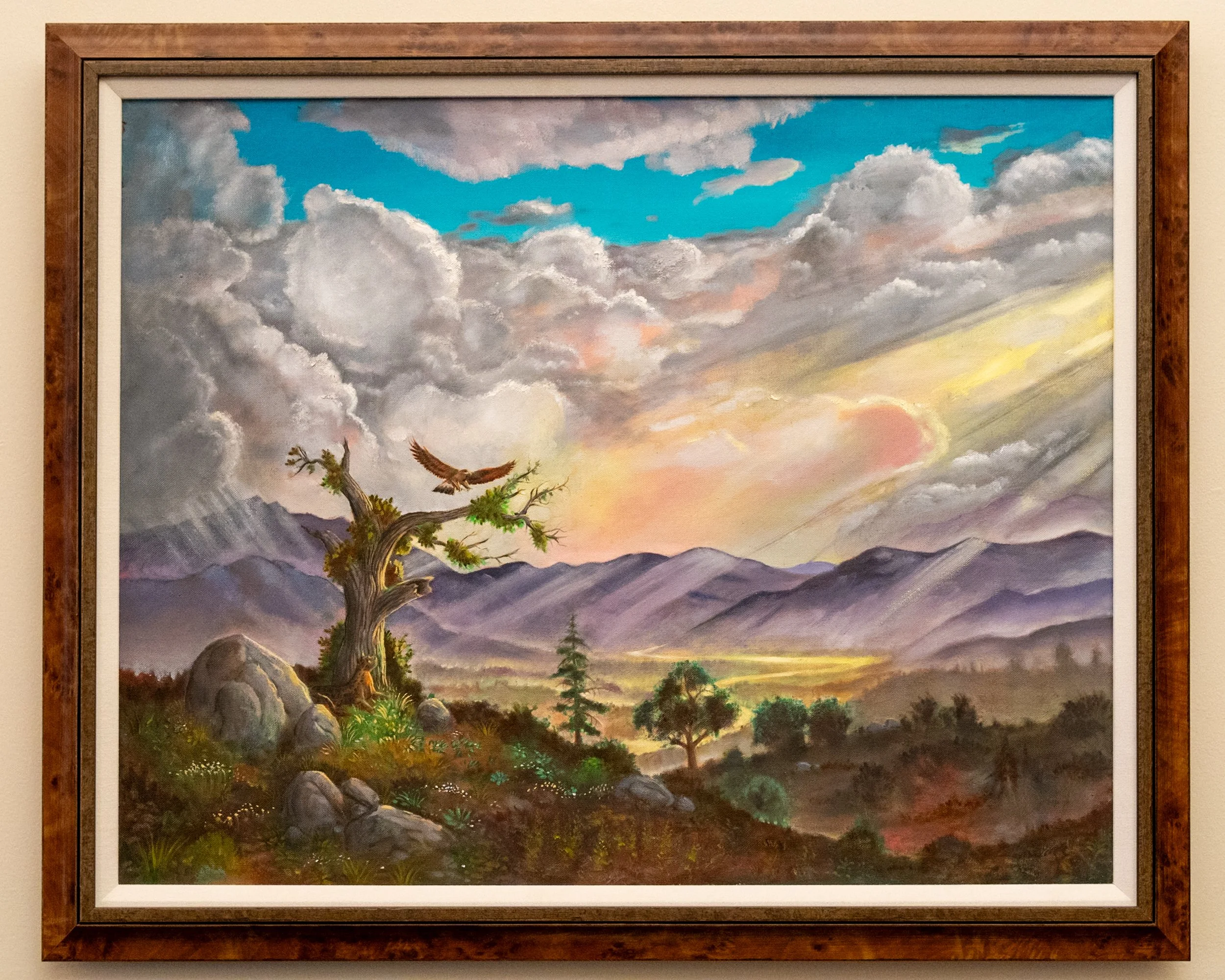
Sun Kissed Valley: Eagle Jaguar Tree Warrior Society
Oil on canvas
This is my masterpiece. Many years in the making. Being color blind I struggled mightily to try and come up with a majestic landscape in the vein of Albert Bierstadt. I finally had a big breakthrough when I realized I just need to do my own thing. The heck with those mainstream color people. Ha ha. It is an allegory of the old ones. The coming together of the jaguar people with the eagle people under the old ancient tree way.

Bridalveil Falls
Oil on canvas
After Albert Bierstadt. The bride can be seen in the shadow of the falls (wearing the falls as a bridal veil). I always wanted to paint like this.
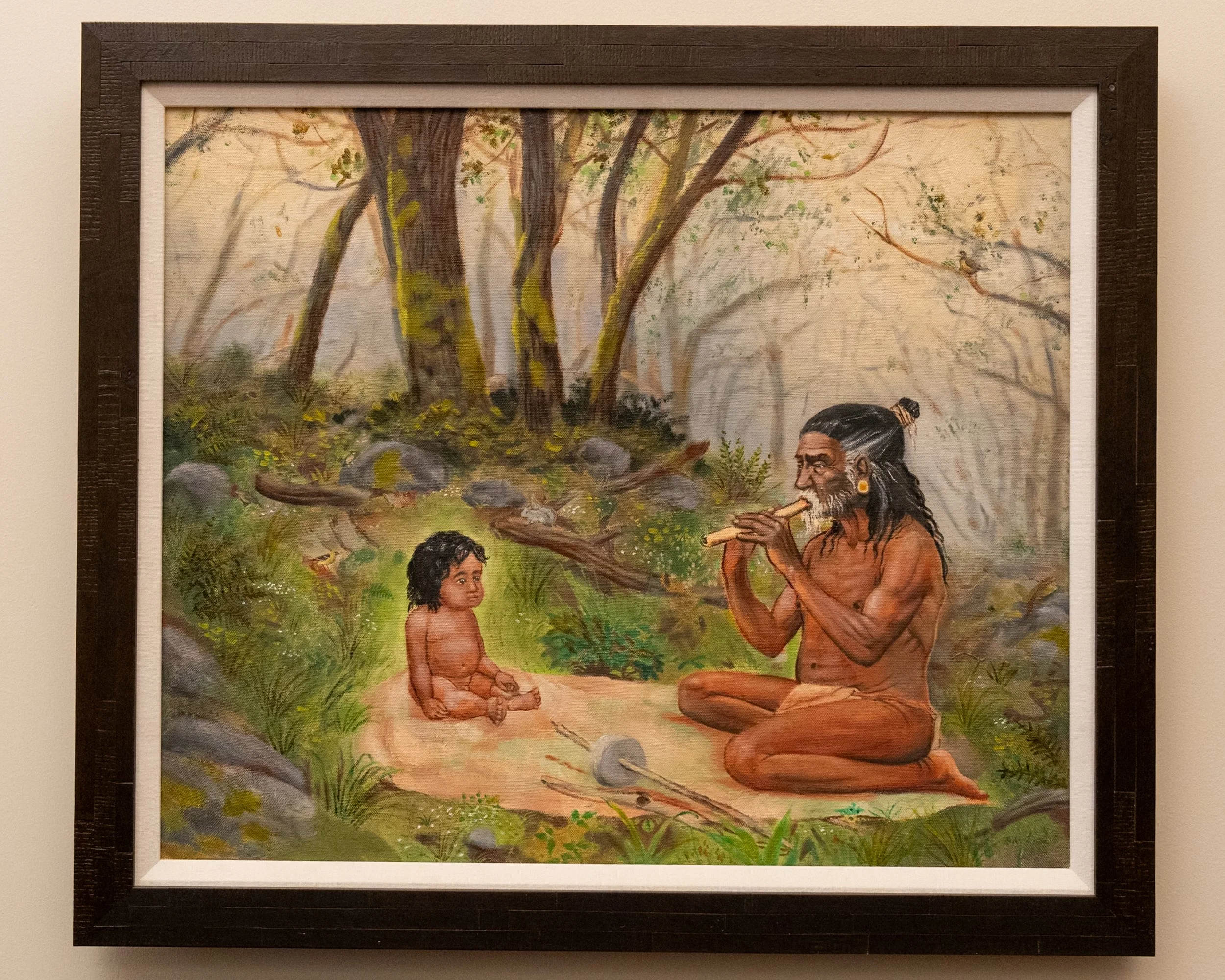
Old School
Oil on canvas
Real life teachings in the forest, California style. Birds know a good hug song when they hear it. Squirrels too. I painted this back before I knew how Pomo flutes were played. You don’t blow straight into it like shown here, you blow across the top of the opening like a soda bottle.

Gall Tomahawk Man
Oil on canvas
After Gall’s family was murdered by the bluecoats, he vowed to never use a gun because he wanted to kill his enemies up close. One of the leaders of the Greasy Grass Battle (when Yellowhair’s army was decommissioned).
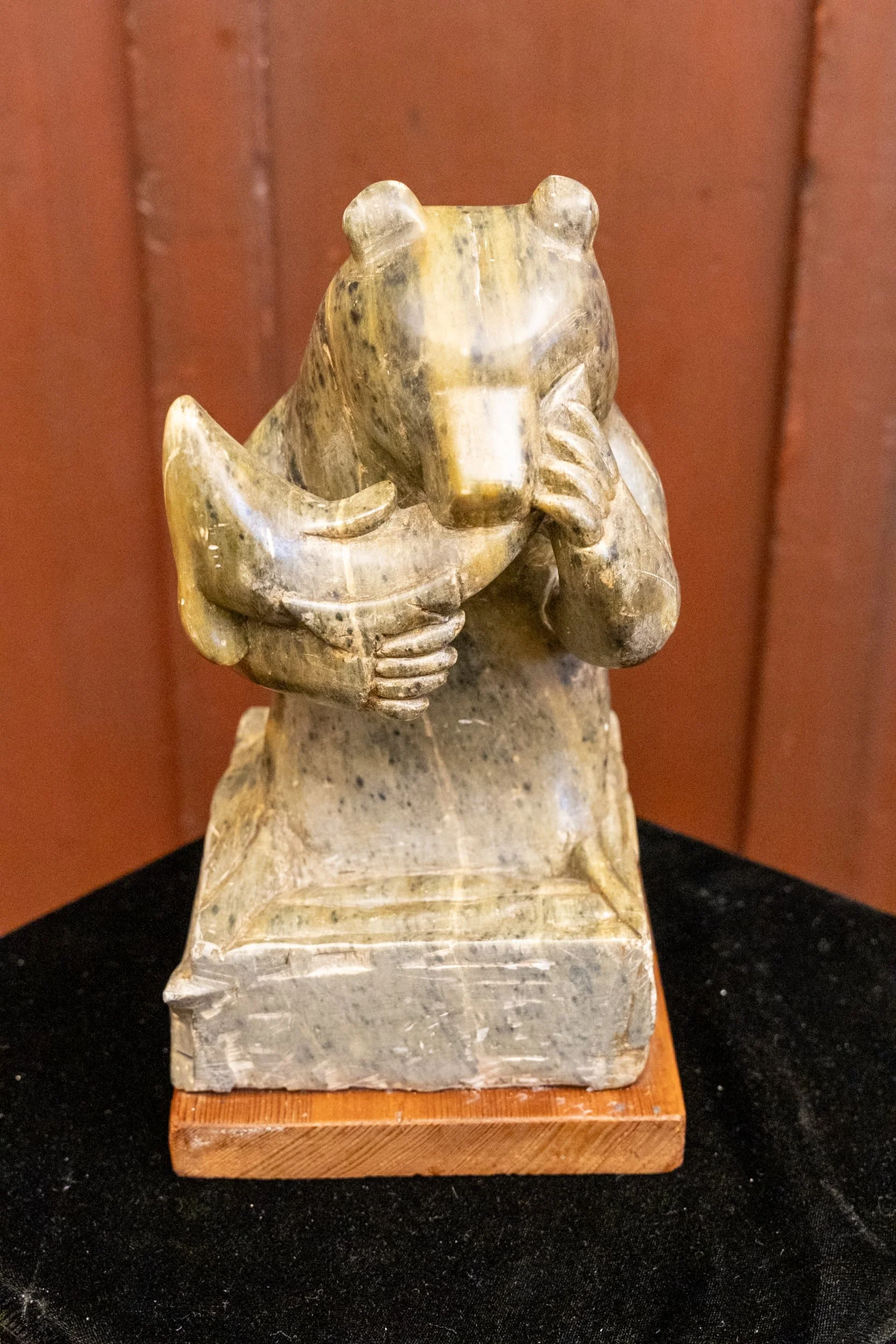
Suppertime
Steatite
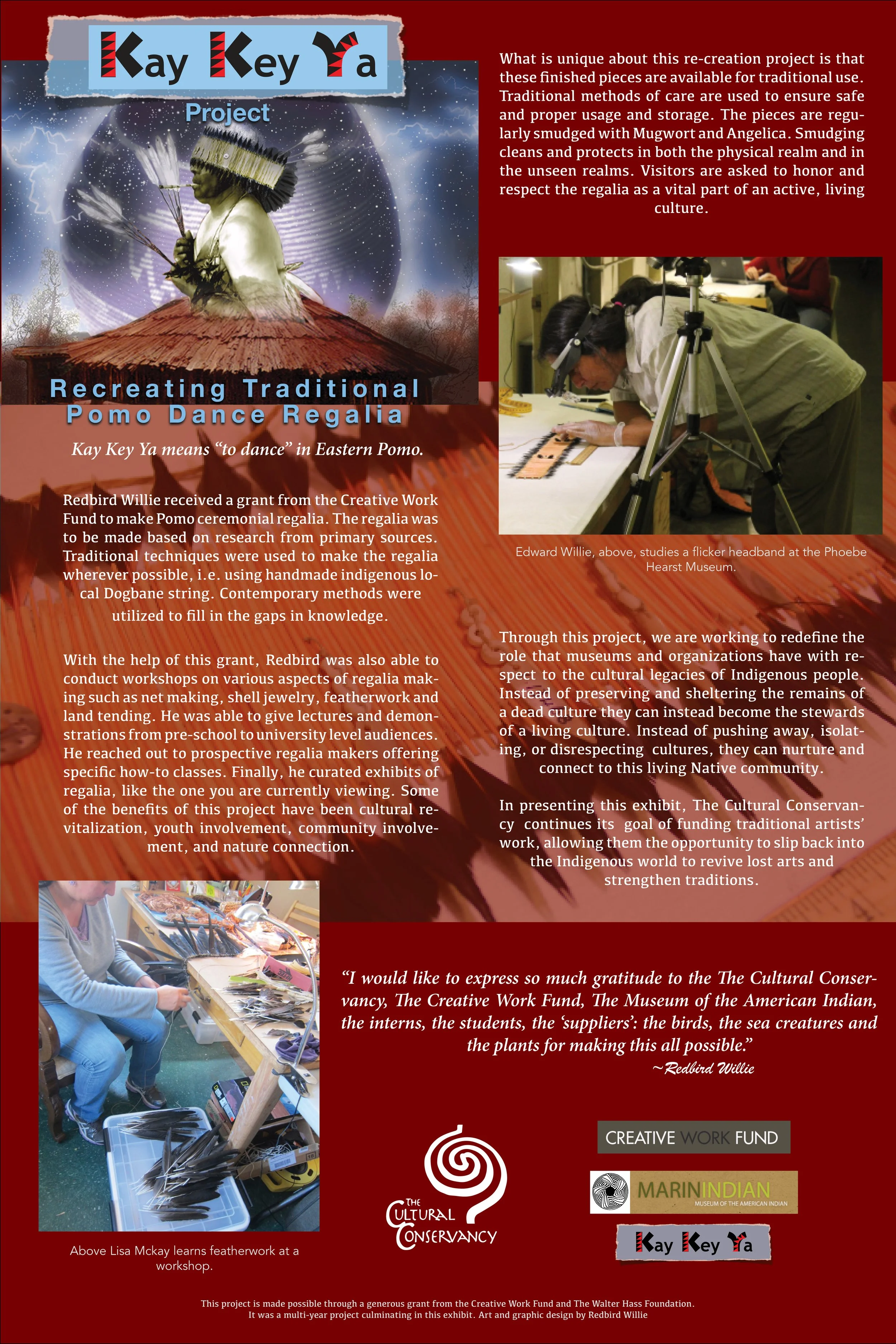



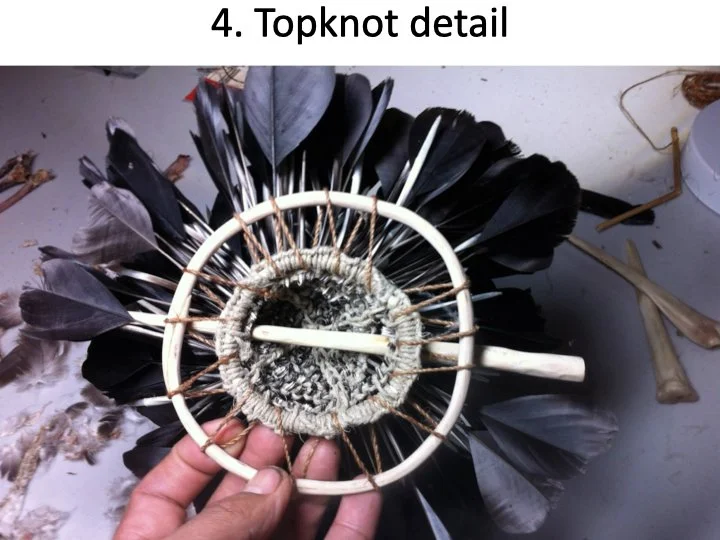
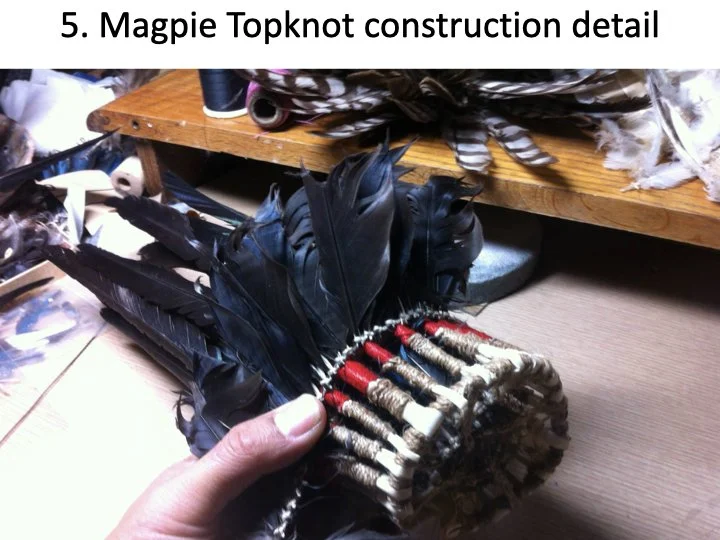


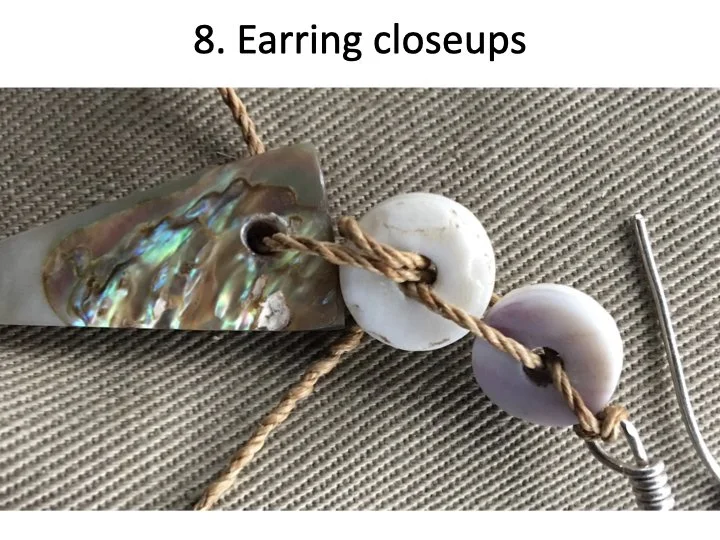
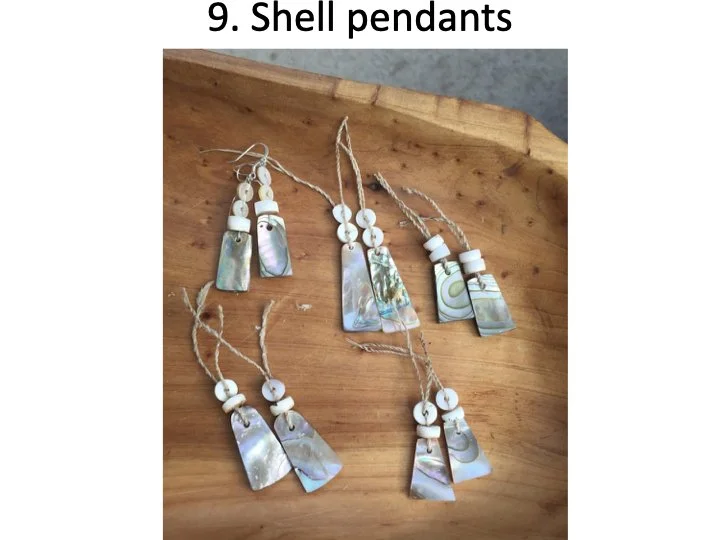
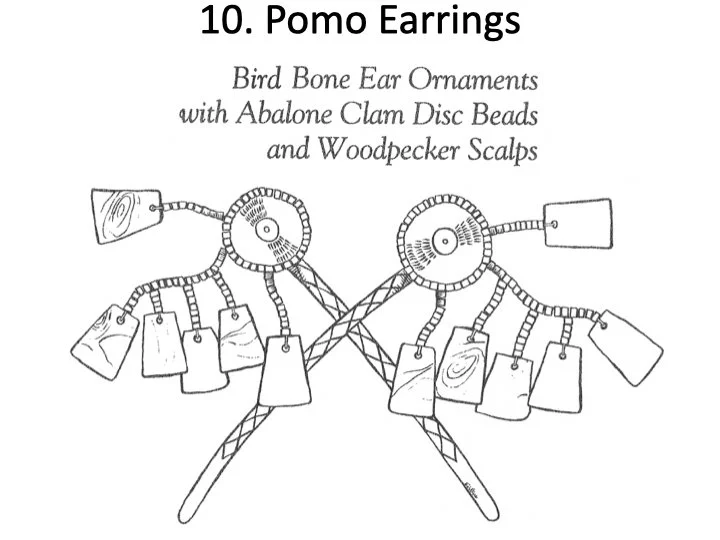
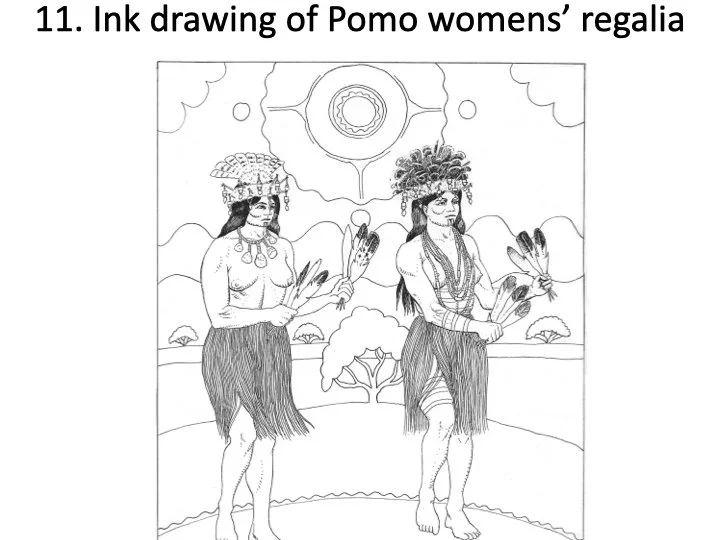


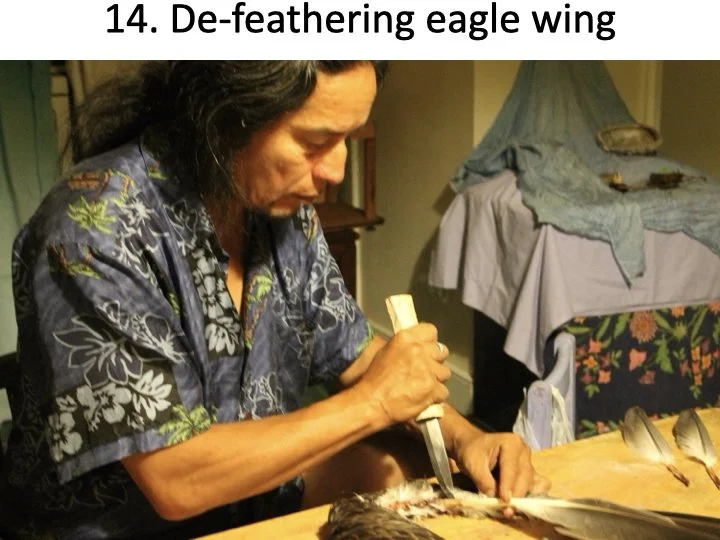
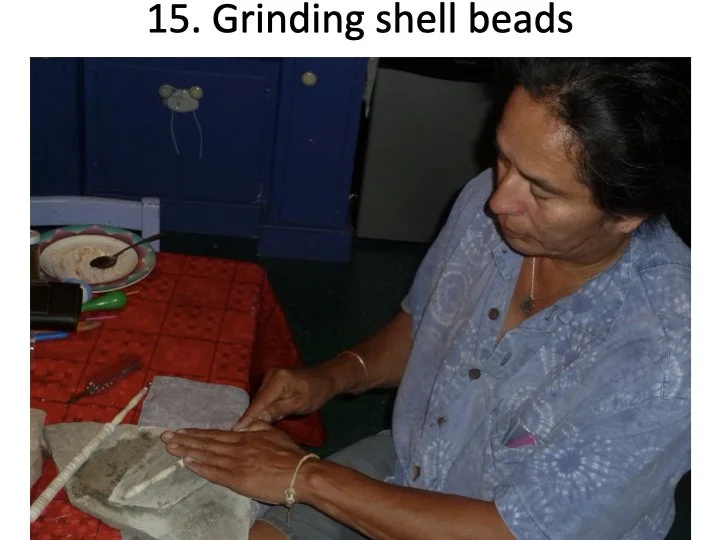
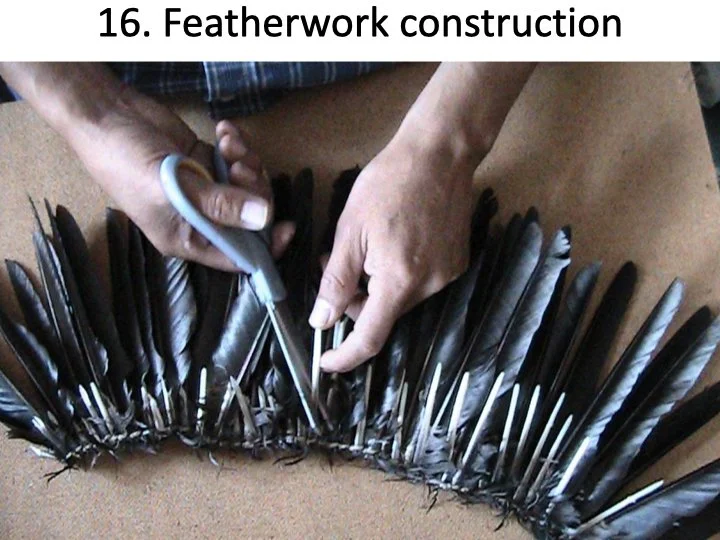
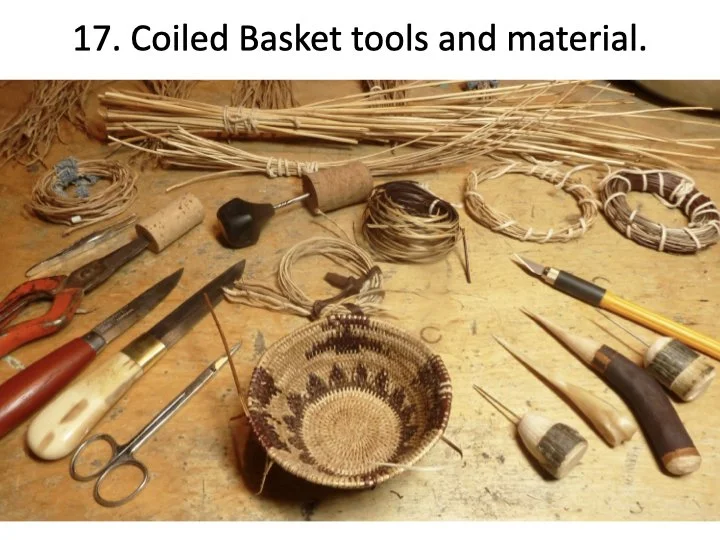




Great Blue Heron Topknot
GBH feathers, Oak hoop, Hemp String
This is worn on top of the head and is used to secure regalia on the head by attaching wooden hairpins through it.
Topknot Hairpin
Manzanita, Washington Clam beads, Abalone, Nettle fiber and flicker feathers
This is the hairpin that is used to attach the headdress to the hair of the dancer.
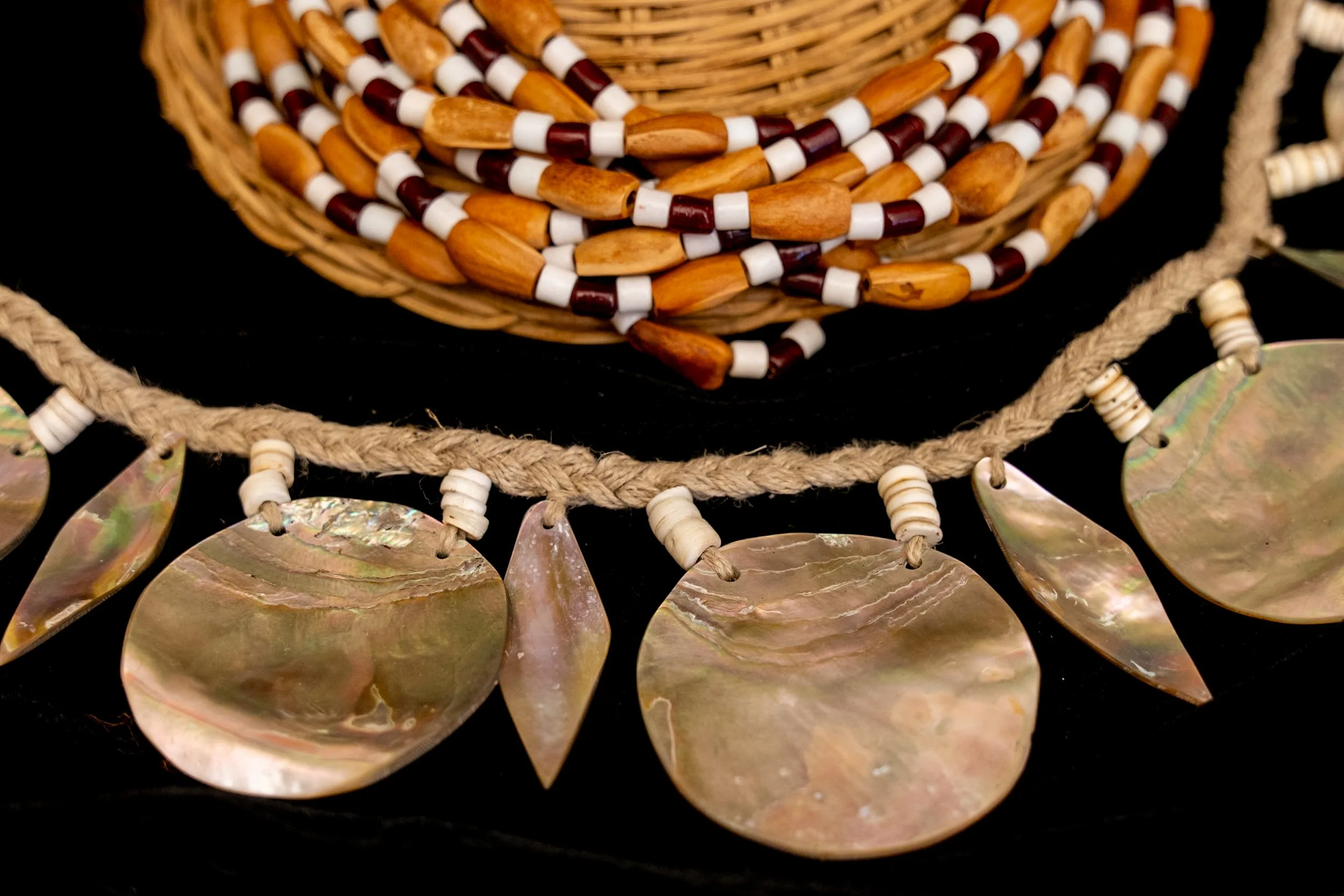
Pinenut Shell Necklace
Gray pine nuts, Glass beads, Buckskin
Made by Kimberley Stevenot, Sierra Miwok. This version was worn by California Indians from the Sacramento Valley area (Maidu, Miwok). Similar ones were worn by the Natives from San Francisco and north to Humbolt county.
Dance Necklace
Cotton string, Clam beads, Abalone pendants
Possibly made by Craig Bates
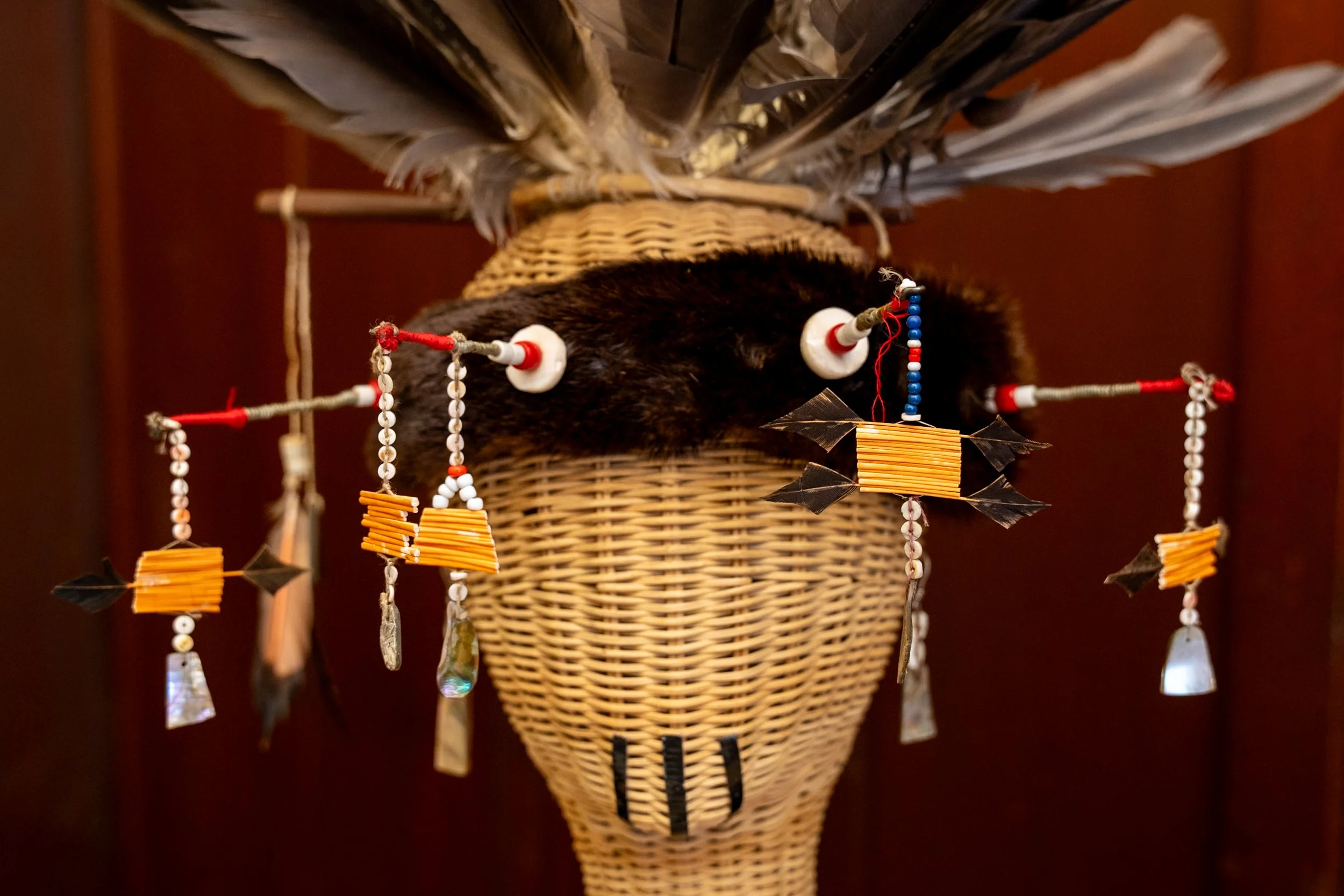
Otter skin Headband
Otter, Abalone, Hemp thread, Dogbane cordage, Glass trade beads, Flicker quills, metal wire, rawhide, cloth

The dangles are put in front of the person’s eyes to hide the person’s face much like the flicker headband used for the male dancers.

Coiled Gift Basket
Sedge, Willow, Redbud, Dogbane string, Clam beads and Quail topknots

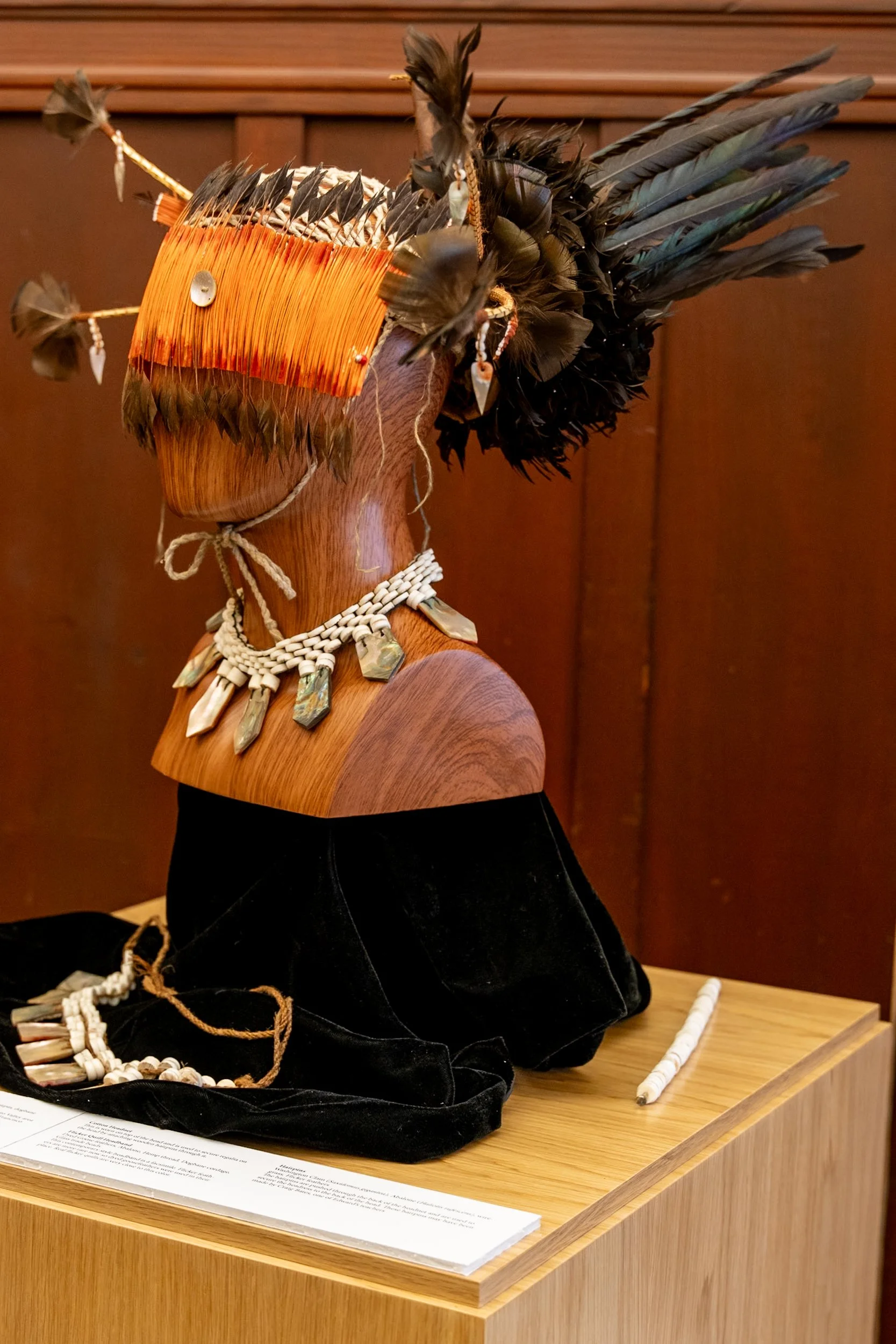
Men’s Ceremonial Dance Headdress
Magpie, crow and goose feathers, oak hoops, manzanita hairpin, dogbane cordage, red yarn
This version was worn by California Indians from the Sacramento Valley area (Maidu, Wintu). Similar ones were worn by the Natives from San Francisco and north to Mendocino county. It is worn on the back of the head.

Necklace #1 (on mannequin)
Washington Clam (Saxidomus gigantea), Abalone (Haliotis rufescens) and Dogbane (apocynum cannabinum)
This dance necklace is based on a necklace collected by Langsdorf in 1806, which is now in the St Petersburg Museum in Russia.

Necklace # 2
Washington Clam (Saxidomus gigantea), Abalone (Haliotis rufescens), Dogbane (apocynum cannabinum)
This dance necklace is based on the necklace collected by Langsdorf in 1806, which is now in a Museum in Munich, Germany.

Flicker Quill Headband
Dyed Goose feathers, Abalone, Hemp thread, Dogbane cordage, Glass trade beads
This contemporary style headband is a facsimile. Flicker feathers are more rare now so dyed goosefeathers were used in their place. Real flicker quills are very close to this color.
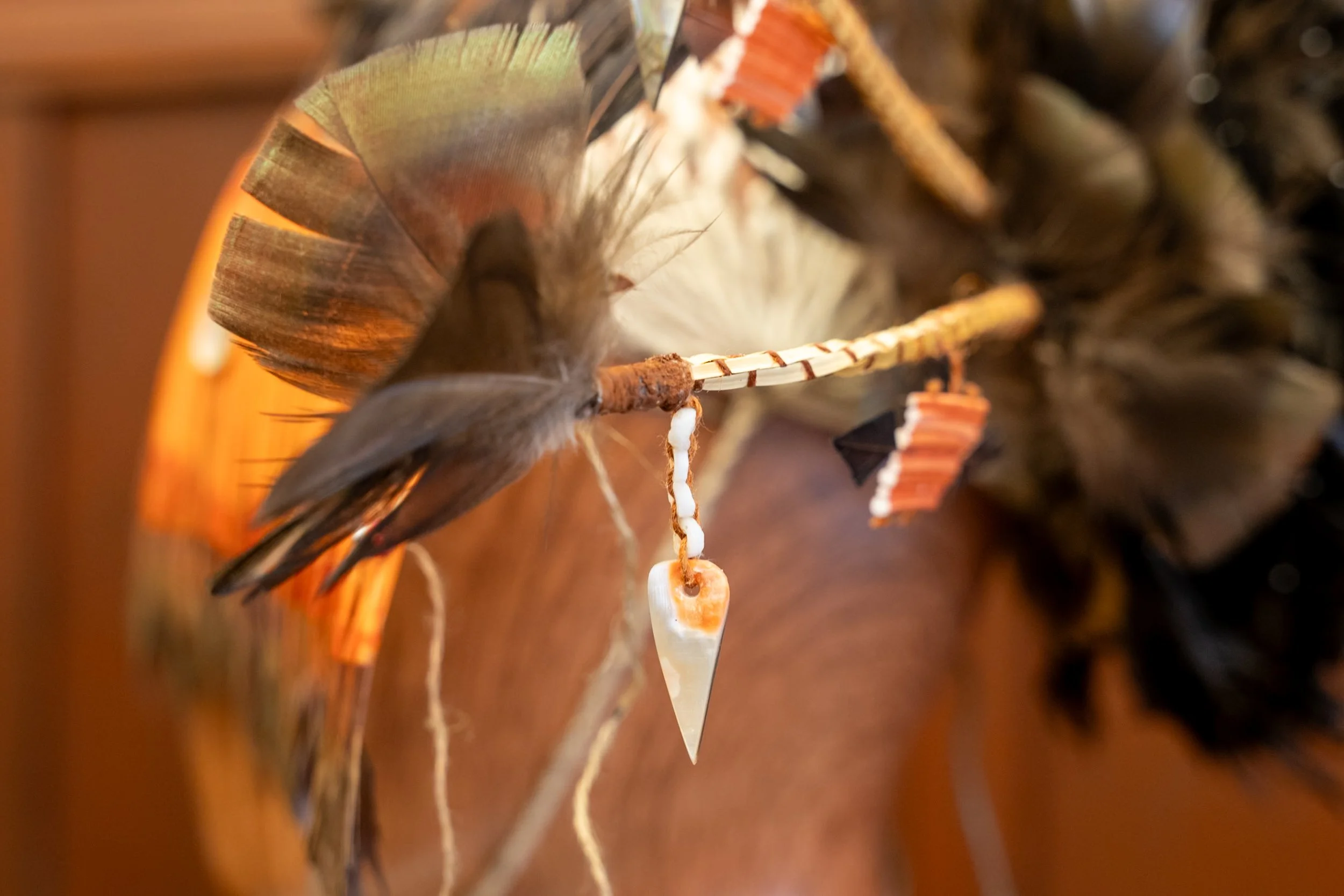
Hairpins
Washington Clam (Saxidomus gigantea), Abalone (Haliotis rufescens), wiregrass, Flicker feathers
The hairpins are pushed through the back of the headnet and are used to secure the headress to the back of the head. These hairpins may have been made by Craig Bates, one of Edward’s teachers


Great Blue Heron Skirt
Heron and Eagle feathers, Dogbane and cotton cordage, Washington clam beads
Feathers are attached onto the net knots by the base of their quills. An Eagle blessing feather is attached on each side.

Ceremonial Eagle Dance Skirt
Eagle, Mallard Duck and Hawk feathers, Washington clam beads and Dogbane cordage
This skirt was made from a pair of eagle wings. On each side of the skirt are hawk blessing feathers. These feathers are decorated with clam beads and tiny colorful scalp feathers from a Mallard Duck which are painstakenly applied around the quill one at a time.